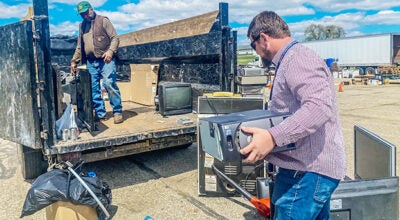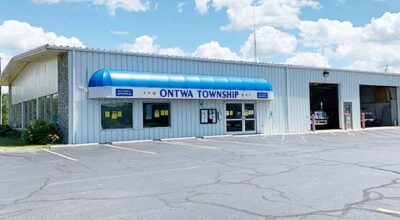Council approves two contracts, airport grant
Published 11:25 pm Monday, September 26, 2011
Much will be accomplished at Dowagiac Municipal Airport for the city’s $2,425 share.
City Council Monday night approved a $35,000 contract, a $56,000 contract and a $97,000 grant to update the airport layout plan (ALP).
The existing ALP dates to 2001.
Gary Carlile said the $35,000 contract meets an Oct. 16, 2008, requirement of the Federal Aviation Administration (FAA) to review all properties and easements associated with the airport and to develop these easements and descriptions into a computer-aided design (CAD) format.
Also as part of this contract, consultant URS, through a sub-consultant, Roosien and Associates, will perform a certified boundary survey of the airport and place monuments at all of its property corners.
The final function of the first contract will be describe and map a conservation easement which was to have been completed through the 1987 grant which expanded the main east-west runway (9/27) from 3,800 feet by 75 feet to 4,700 feet by 100 feet.
Purpose of the easements was to mitigate the impact of the expansion on the natural environment surrounding the airport and was a condition for receiving the construction grant.
Twenty-six acres, which are the subject of the conservation easement, were owned by the city at the time and are on the northwest corner of the airport.
An additional 100 acres were purchased as part of the original expansion project, and language requiring the conservation easement is contained within the 1987 grant agreement.
These lands are now known as the “Witko Ponds” and are on the south side of the airport.
Carlile said it is unknown why the conservation easements went unrecorded when the land had been acquired.
All acquisitions were handled by the Michigan Department of Transportation Right of Ways Division through a contract with the city paid for with grant funds.
The second contract, for $56,000, updates the ALP, which Carlile characterized as a development document for the airport.
“No improvement can be made on the airport if it is not shown on the ALP and approved by the FFA,” he said.
The ALP is a long-term planning document, with the last one completed when the 1987 expansion was contemplated.
“It is very important to note that even if a development appears on the plan, it does not assure that it will be done, as all improvements are based upon need — particularly runway/taxiway expansions,” Carlile said.
The new ALP must be done in accordance with FFA rules and requirements.
It will map all features in and around the airport, both natural and manmade.
These features and use then establish the pattern of development — or not.
Carlile said several important tasks will be undertaken as part of the ALP update.
Particularly significant will be the survey of the approaches to the main runway, 9/27.
The city/airport was fortunate to have been selected by the FAA in 2008 as one of the airports in the region to have the approaches of its main runway mapped for an improved GPS (global positioning system) approach.
This approach eddies not mean bigger aircraft or an expansion of the size the approach.
Rather, Carlile said, approaches will stay the same size and slope. But through implementation of the GPS system will be significantly more accurate and, hence, safer in periods of poor weather with lower minimum flying conditions.
Accuracy gained through GPS approaches will provide secondary benefits as well, Carlile indicated.
“Currently, a four-unit hangar on the east end of the airport and the airport office/pilots lounge are marked (via lighting) as obstructions to the side slope of the east approach,” Carlile stated. “As obstructions, these structures cannot be replaced sand no additional structures can be developed within the area of the structures. However, through implementation of the GPS system, these structures will no longer be considered obstructions, thereby allowing continued use and development within the current airport configuration, as well as look at other improvements that will be need-based, such as lengthening the main runway or adding taxiways.”






